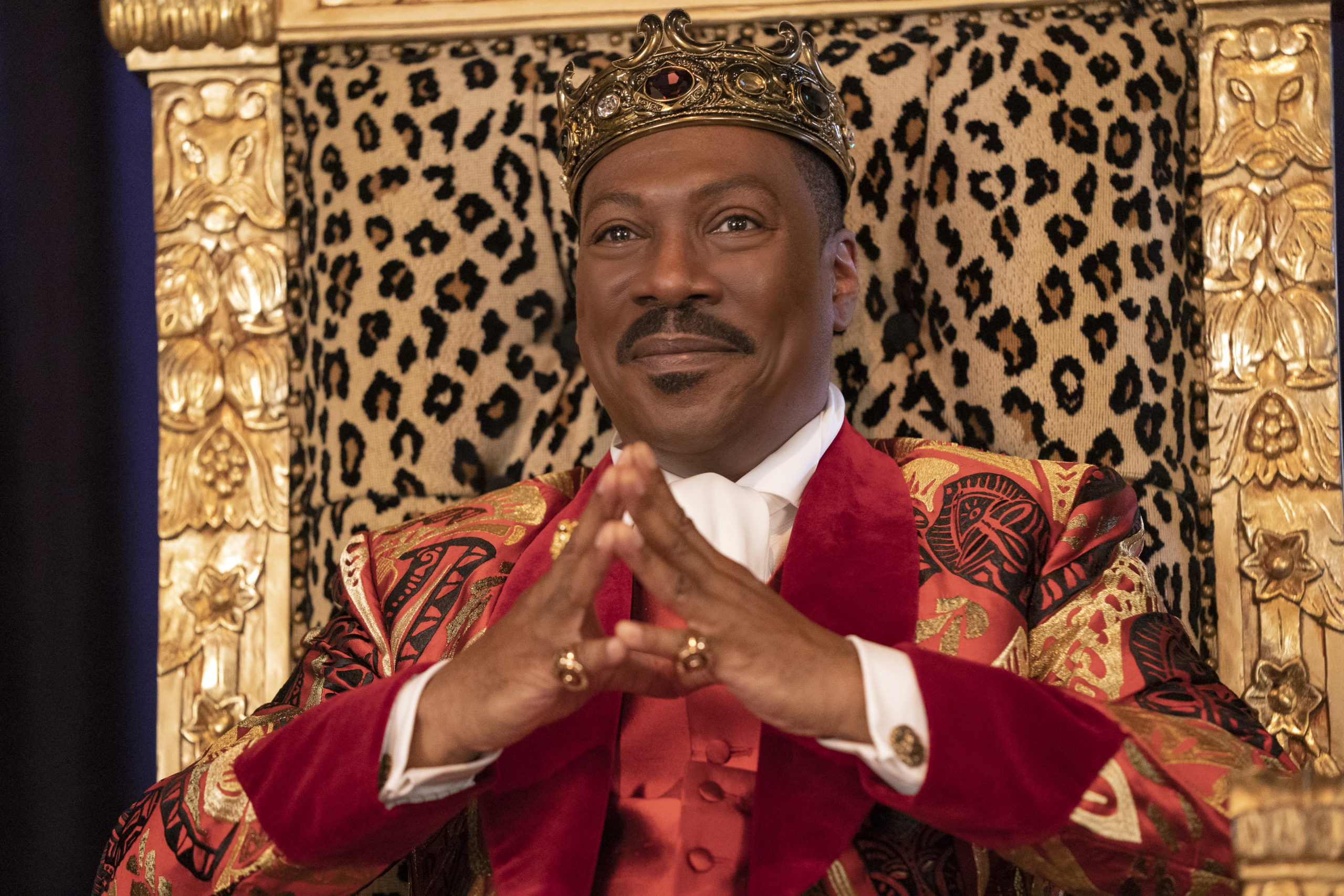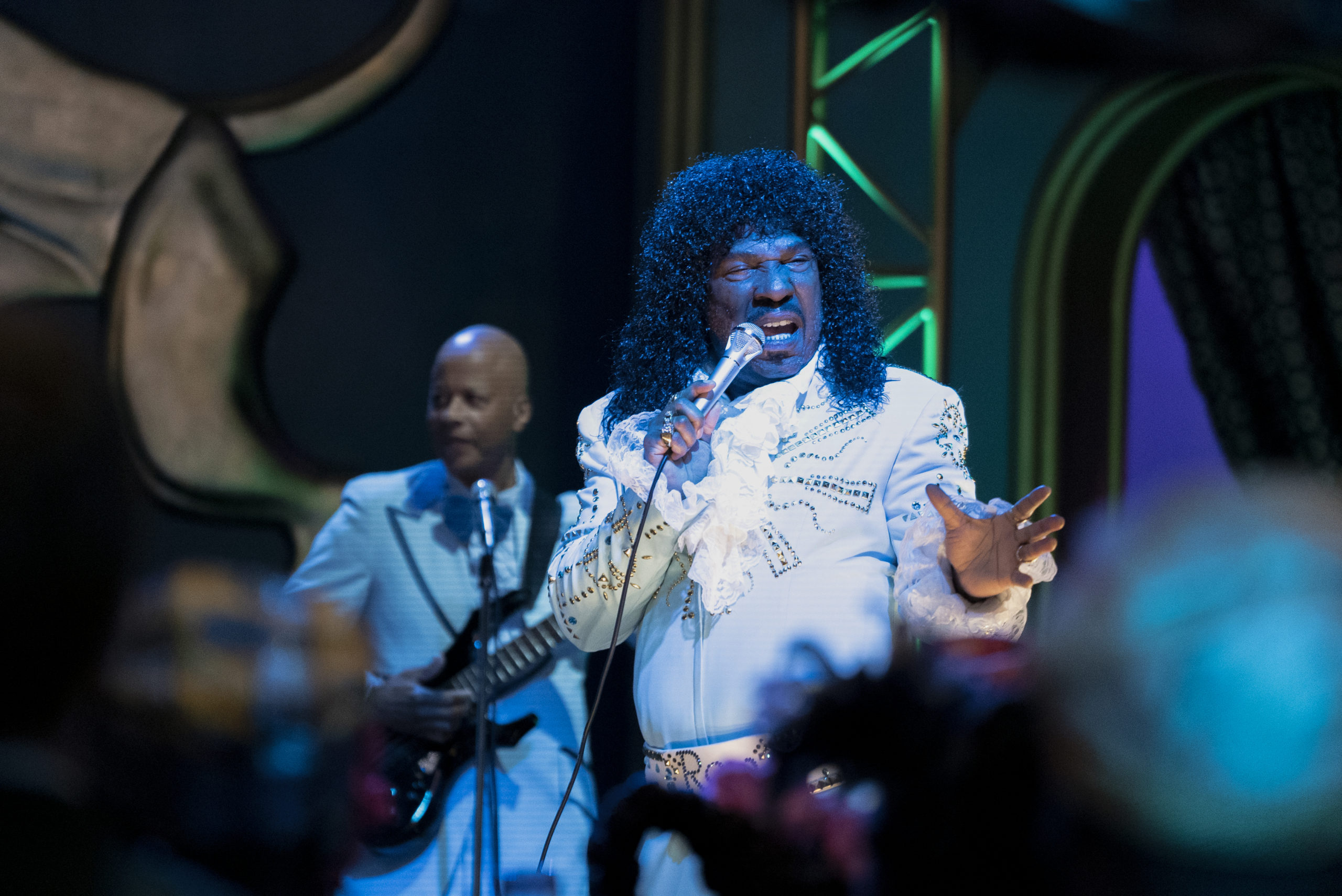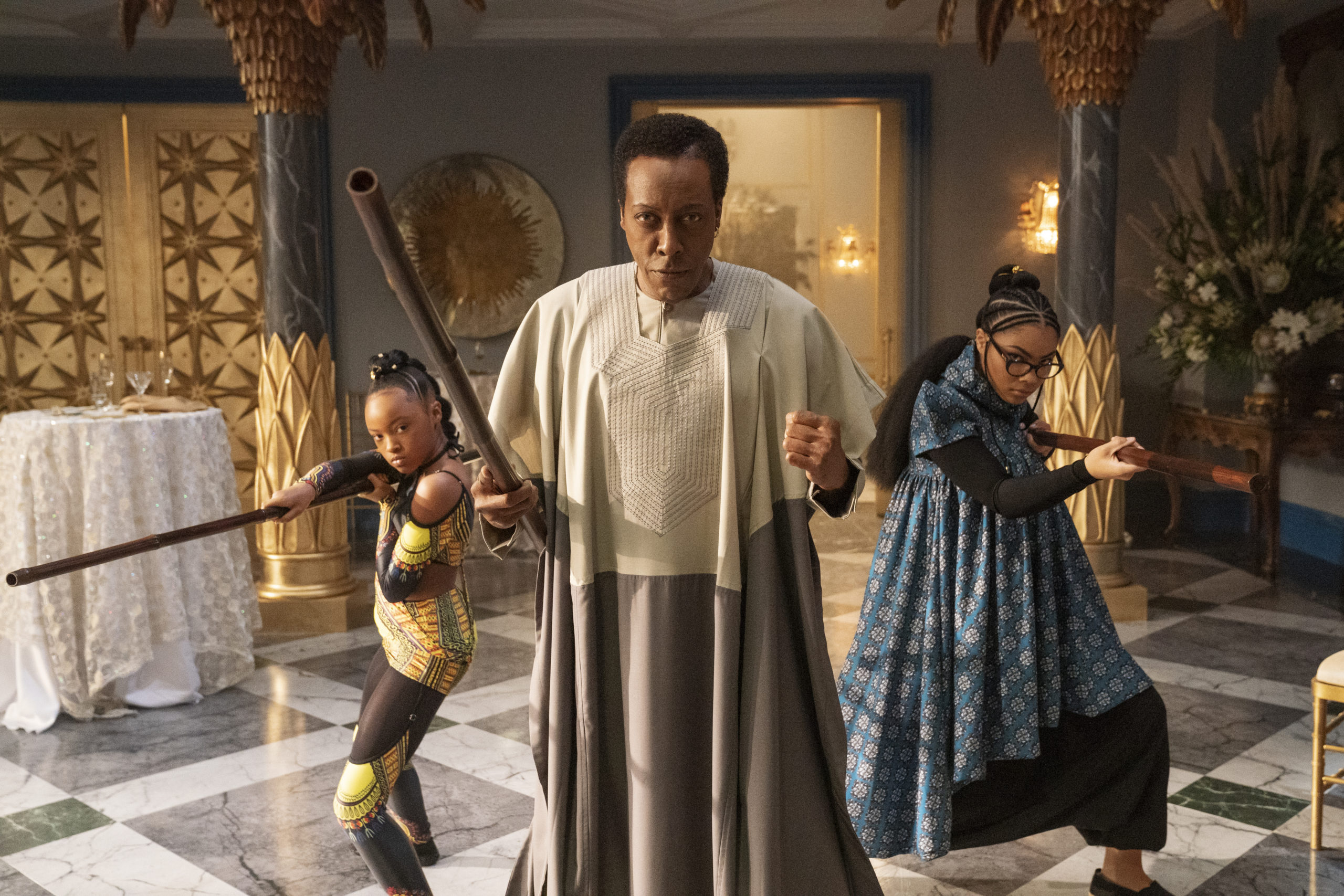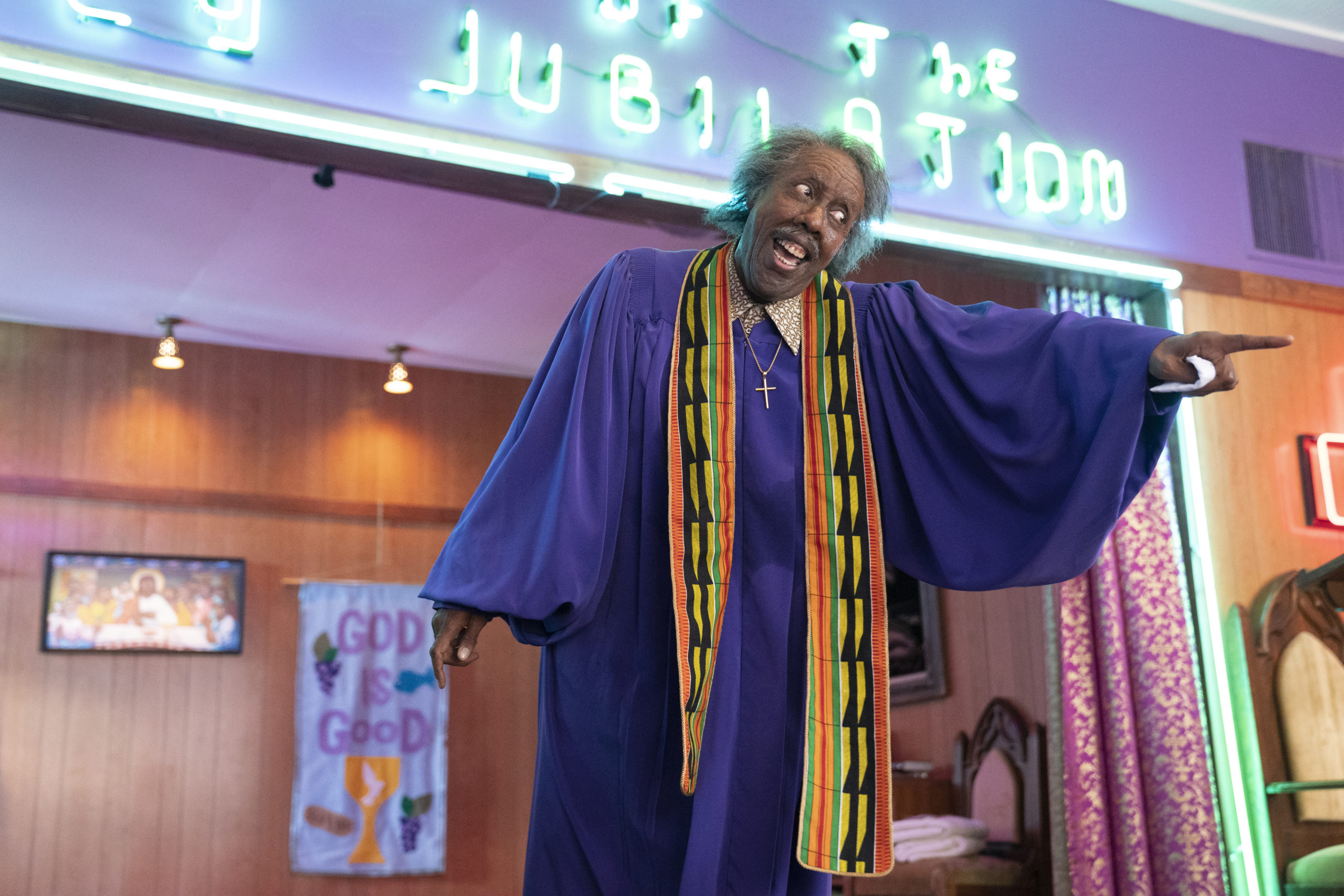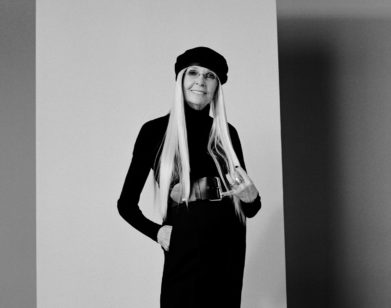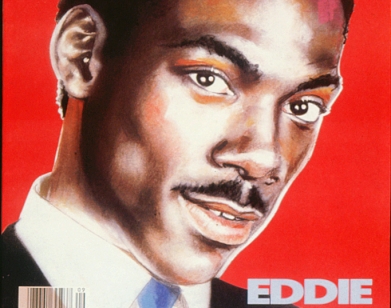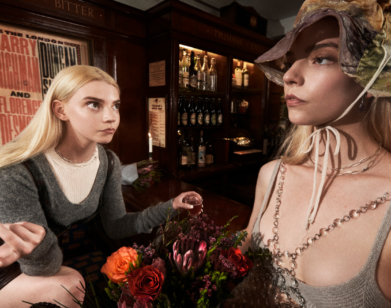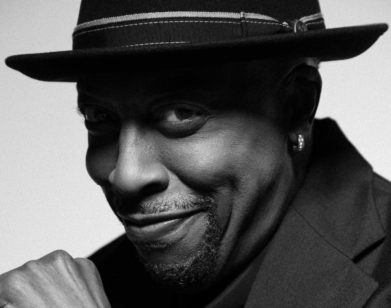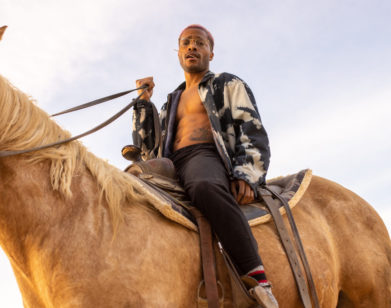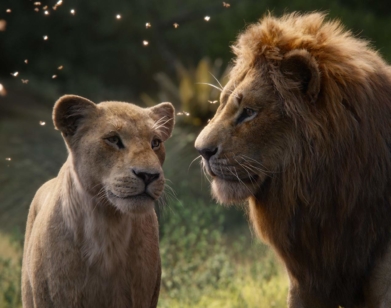hair on film
How the Hairstylists of Coming 2 America Achieved the Film’s Looks
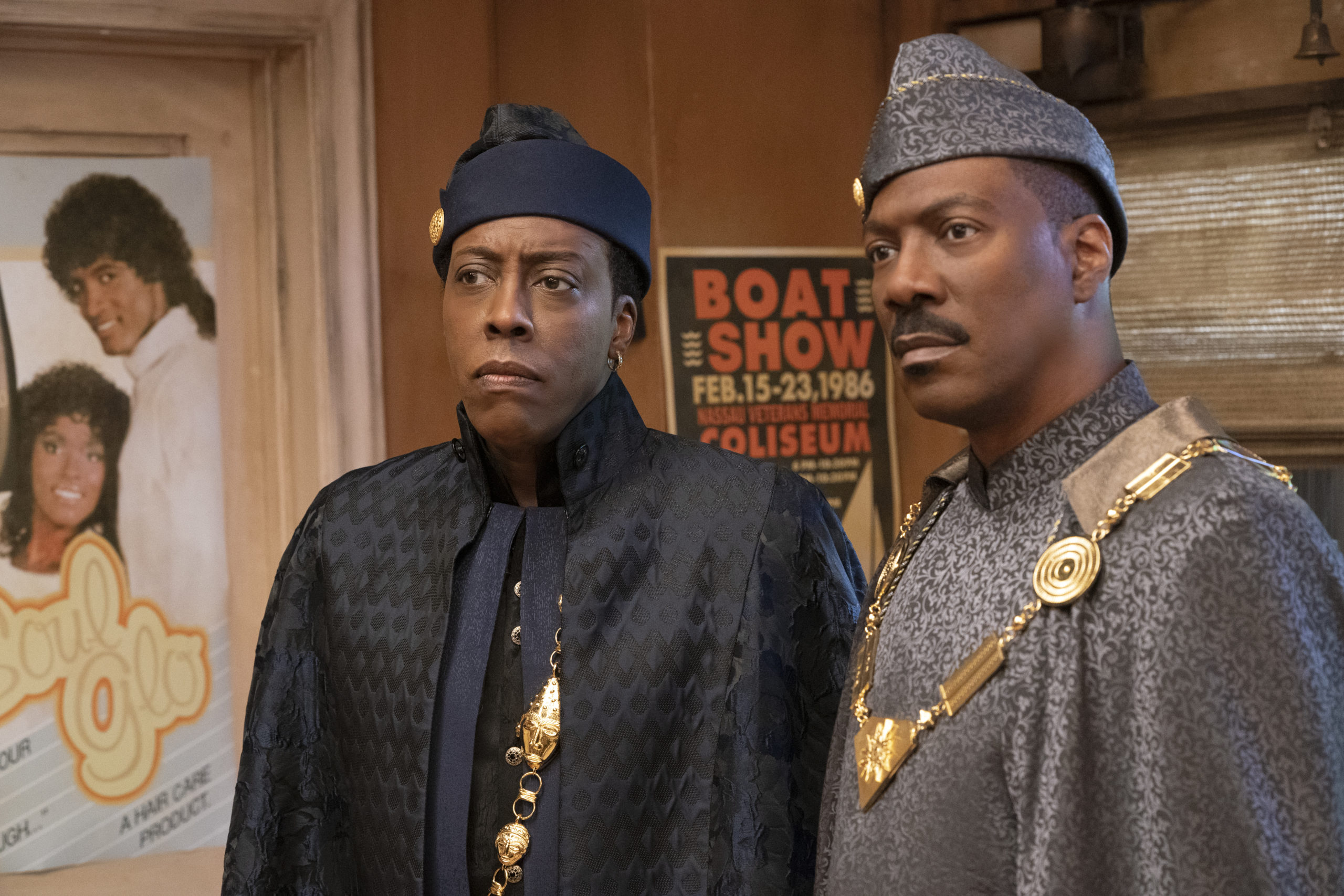
Arsenio Hall and Eddie Murphy. Photo by Quantrell D. Colbert. Photos courtesy of Amazon Studios and © 2020 Paramount Pictures.
Thirty years later, Eddie Murphy and Arsenio Hall are back with the long-awaited sequel to Coming to America (1988) aptly titled, Coming 2 America. The film follows Prince Akeem (Murphy) as he discovers that he has a long-lost son (Jermaine Fowler) in Queens, NY. As Akeem and Semmi (Hall) return to America to find him, chaos, laughs, and slapstick callbacks to the original film ensue. The sequel brings back all the characters you know and love, from James Earl Jones and Vanessa Bell Calloway to new additions like Leslie Jones and Morgan Freeman. To help us break down the film’s versatile hairstyles, the hair department heads Carla Farmer and Stacey Morris, who also worked on Dolemite Is My Name, talk us through the process of styling a sequel for the ages.
———
Eddie Murphy as Prince Akeem / Clarence / Saul / Randy Watson
MORRIS: “Eddie’s look as a king is pretty basic. It’s just clean and neat. He needs to look royal and like a gentleman, so that’s that look there. But we had a flashback in the movie to the eighties, so I had to replicate what his real hair actually looked like back in the first Coming to America. So that was actually a wig that my wig maker Justin made for me. I had to cut it and get it back into the shape that matches the first movie. Then you have all his characters and the prosthetic makeup was done by Mike Marino and his whole team. I helped with some of the styling, in particular—the barbershop scenes [Clarence and Saul] and Randy Watson. That’s pretty much it when it comes to Eddie, as far as the hair.”
———
Arsenio Hall as Semmi / Morris / Reverend Brown / Baba
MORRIS: “So we had the flashback to the eighties, and I had to recreate that flat top that he used to wear. So obviously that was a wig that Justin made for me and then I cut and styled it. He also had his main character in the movie and I decided that I wanted him to have a look that was royal, mature, but still current-day. So to bring it up to date, I did give him a side part and the hair was a little bit loose and textured. It wasn’t just completely natural hair, that was that wig. Then the new character that he had [Baba] was Mike Marino. He created that dread look on the farmer.”
———
Kiki Layne as Meeka
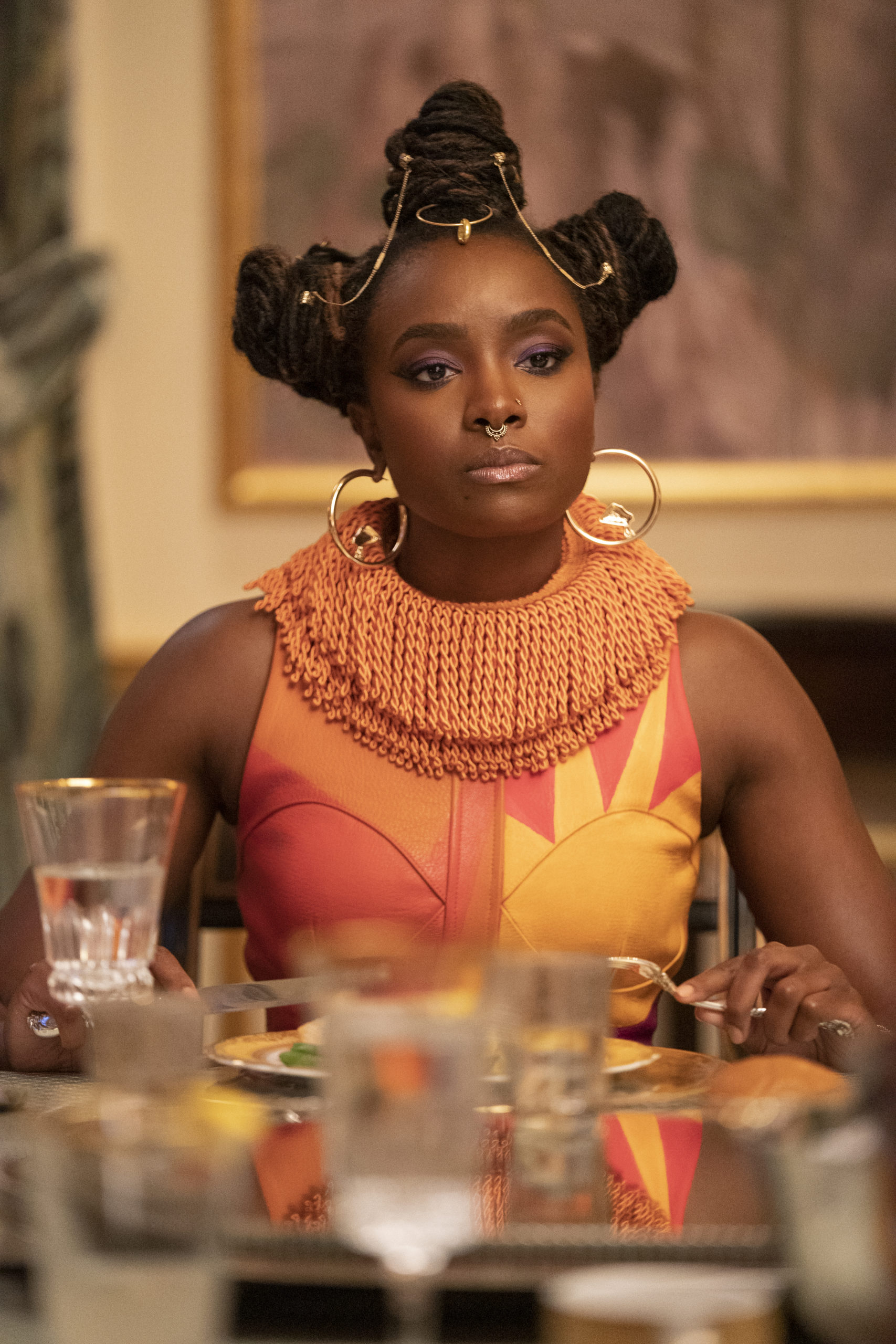
FARMER: “I got most of my inspiration from the Afro-punk movement, which is an artistic underground music, art, hair, and makeup subculture that I really love. I wanted to bring more attention to it, but we had to kind of make it more adjusted for a film. For Kiki, we used faux locs. This woman out of England sent those to us and I had them put in and I created all the styles. I felt like Kiki was the new generation of royals. That generation is embracing their natural hair and natural hairstyles, as opposed to the generation of the past, who was more influenced by European hairstyles. So that’s where we got that idea from. With the jewels and everything, I upgraded them because she is a royal. So we used a lot of gold and fake diamonds. I followed suit with all the girls.”
———
Shari Headley as Lisa
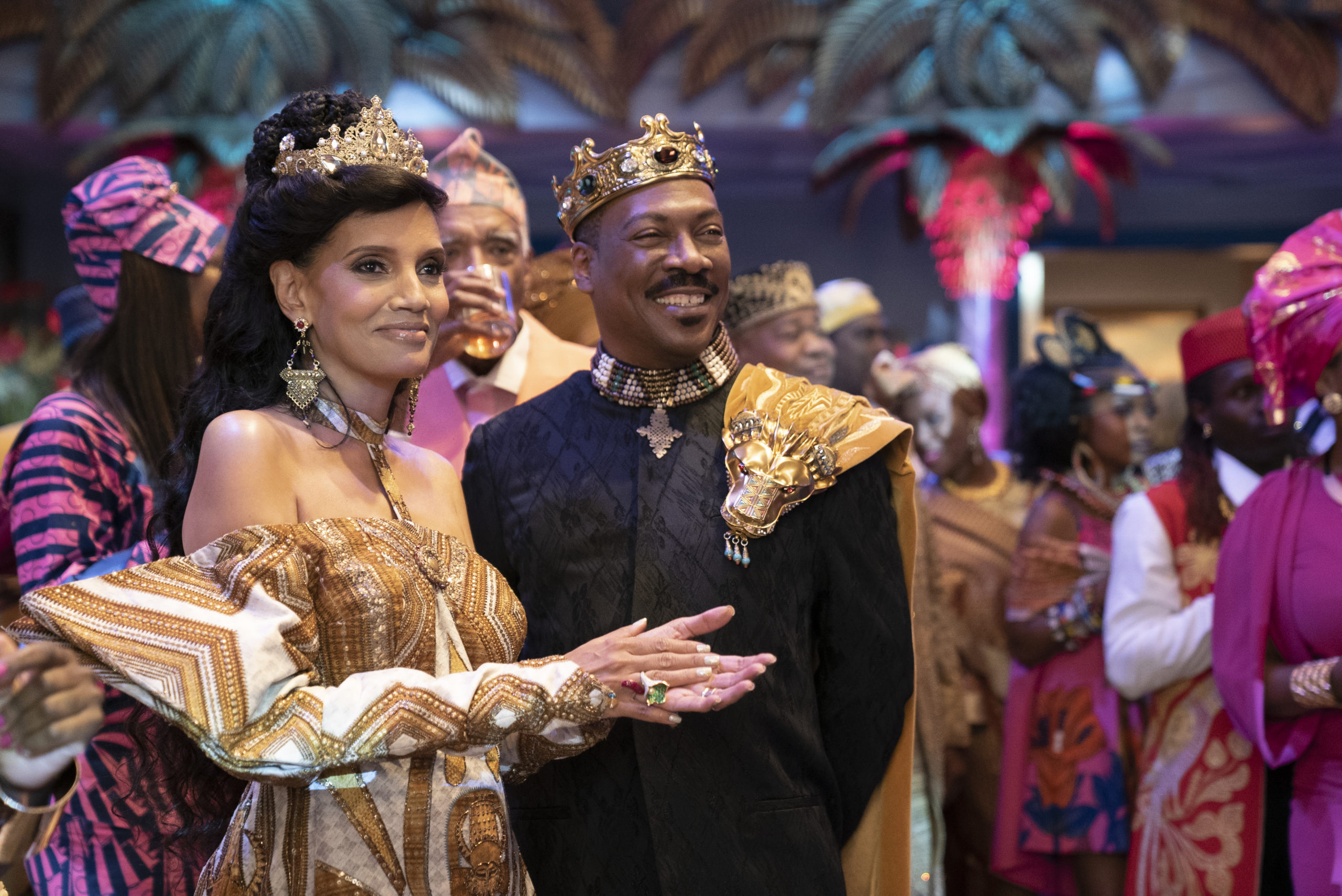
Shari Headley and Eddie Murphy.
FARMER: “For Lisa, I had a different vision for her, but Craig [Brewer], the director was like, “No, I see her this way.” Although she lives in Zamunda, she is still Lisa. So he was absolutely right. I did not use European textured hair on her. I use an Afro-texture that was blow-dried out because I felt that although she is from the U.S., she has been influenced in that way where she’s comfortable with her natural texture. In the first film, she had that same blown-out texture. It wasn’t silky straight. It was just a collaboration. At first, Shari didn’t really want to wear any wigs. I was like, “Look, Ruth Carter [the costume designer] is doing these amazing costumes and you don’t want your own natural hair to not be big enough for what Ruth is putting on your body. So she agreed and I think it was a great choice.”
———
Jermaine Fowler as Lavelle Junson
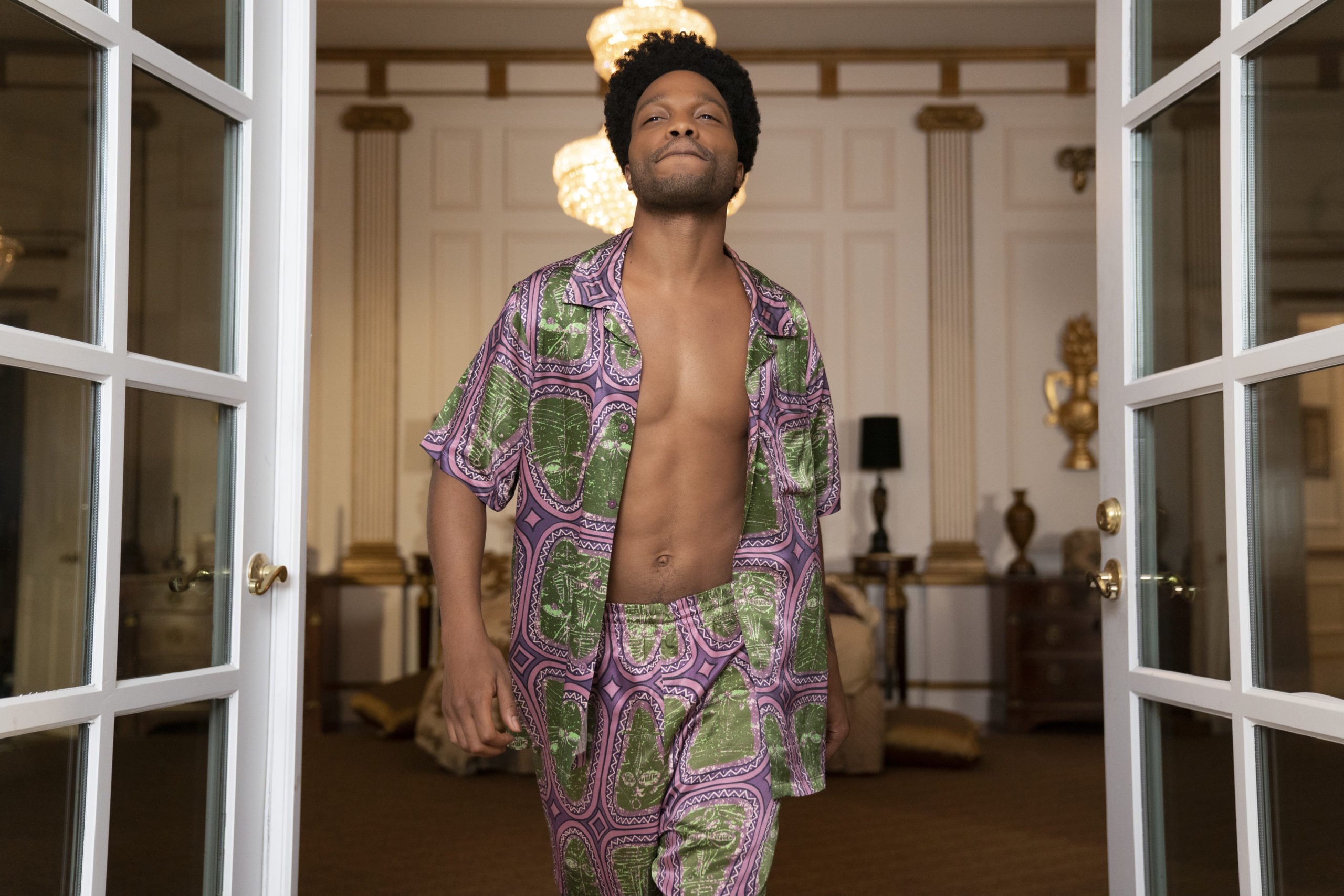
MORRIS: “Initially, he was going to have one look. And then while we were actually shooting, [the director] Craig [Brewer] wanted to see a change from when we first see him in New York and then comes to the palace. He wanted to see an arc in his hair. You know, hair tells a story too. And so Carla came up with what we were going to do to give him a change. It wasn’t like we could comb out his dreads. We didn’t have time. So just on the fly, I dug through my boxes of all the hair that I had brought. It was a top piece. Our barber Victor stepped up to the plate and said, “We’ll put this on and then I’ll build the rest.” So he had to build the rest of that wig every day.”
FARMER: “Jermaine took the longest. He probably sat in the trailer the longest when it came to hair.”
———
Leslie Jones as Mary Junson
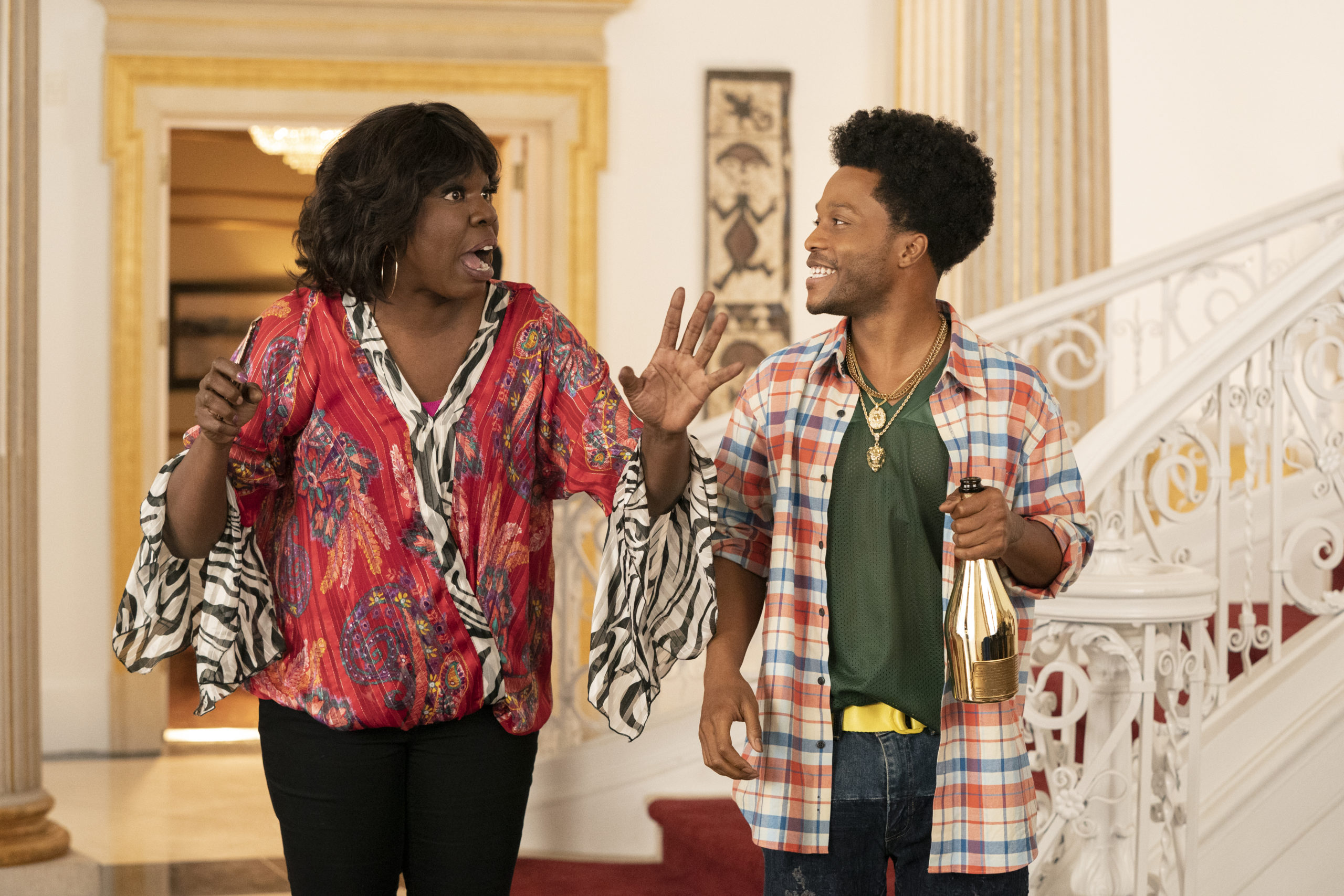
Leslie Jones and Jermaine Fowler.
FARMER: “Well, Leslie brought in her own people: her hair, makeup, and wardrobe dresser. So they created those styles. I kind of suggested certain things and they could take it or leave it. But the last look Leslie was in with those braids, that was a wig that I made beforehand. I was just hoping that someone would wear it, and Leslie wore it in the last scene.”
———
Wesley Snipes as General Izzi
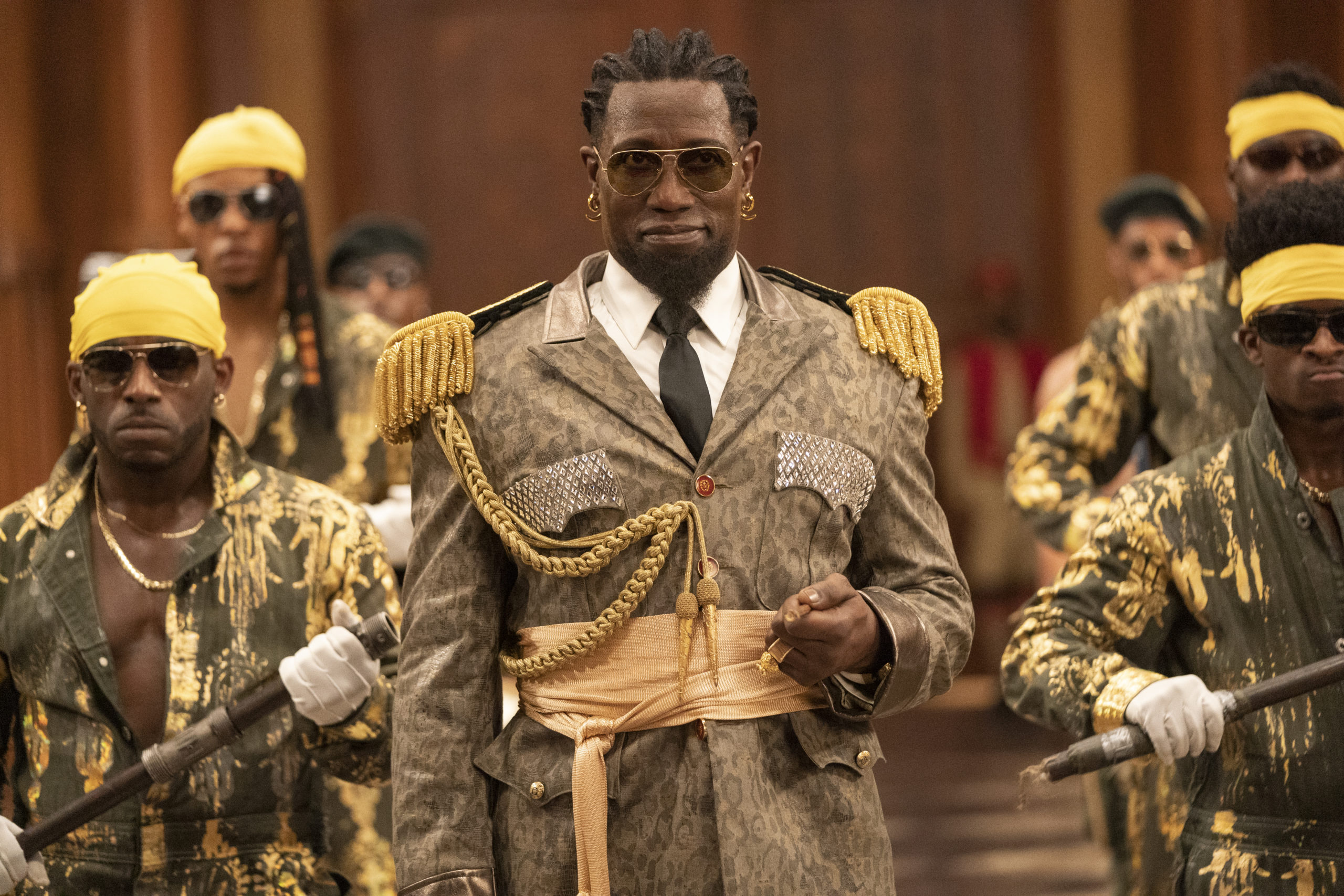
MORRIS: “I knew that not only his costume, but Wesley’s character and what he would bring, would be so different and unique and specific. I wanted him to be in some hair that he could really play with and be fun in. I had a little more leeway with him because he was from Nextdoria as opposed to Zamunda. He didn’t have to be so refined and have such a European influence. So I could make him a little edgier and use my imagination because this movie is a fantasy. It’s not real, but I did derive his look from a Rwandan style called Amasunzu, which originated from the Tutsi tribe in Africa. They would do these elaborate looks where they incorporated and stiffened the hair with mud and whatever else they used that was indigenous of that land. I recreated that type of look and came up with my own style.”

